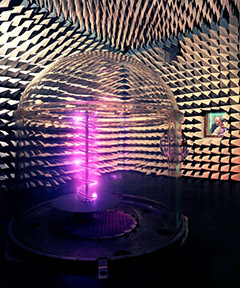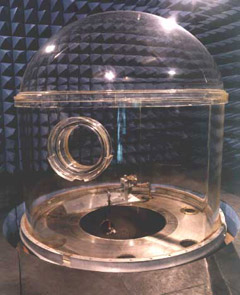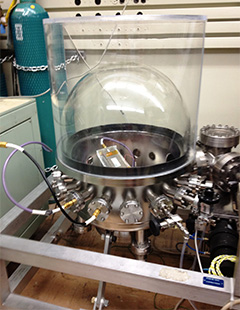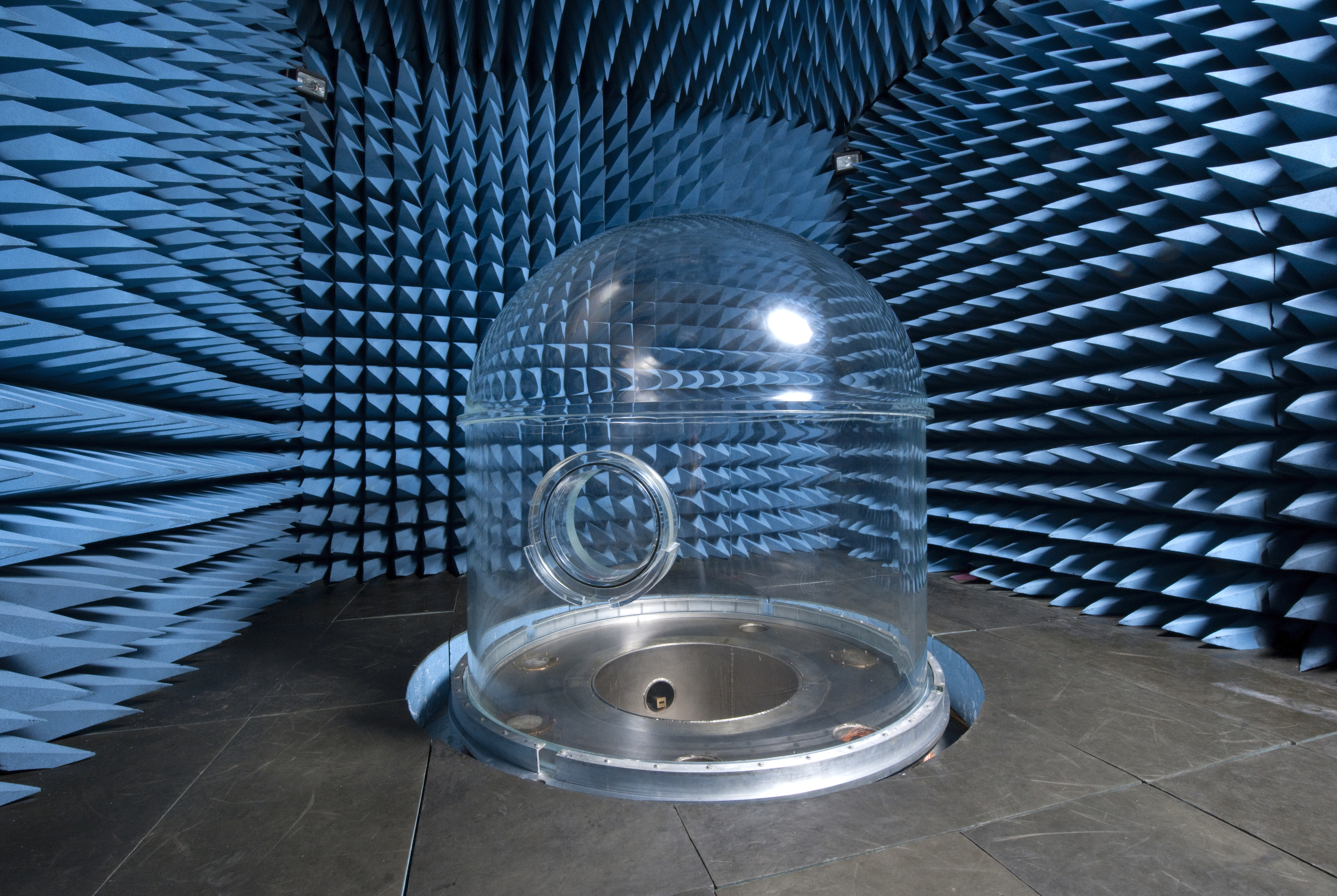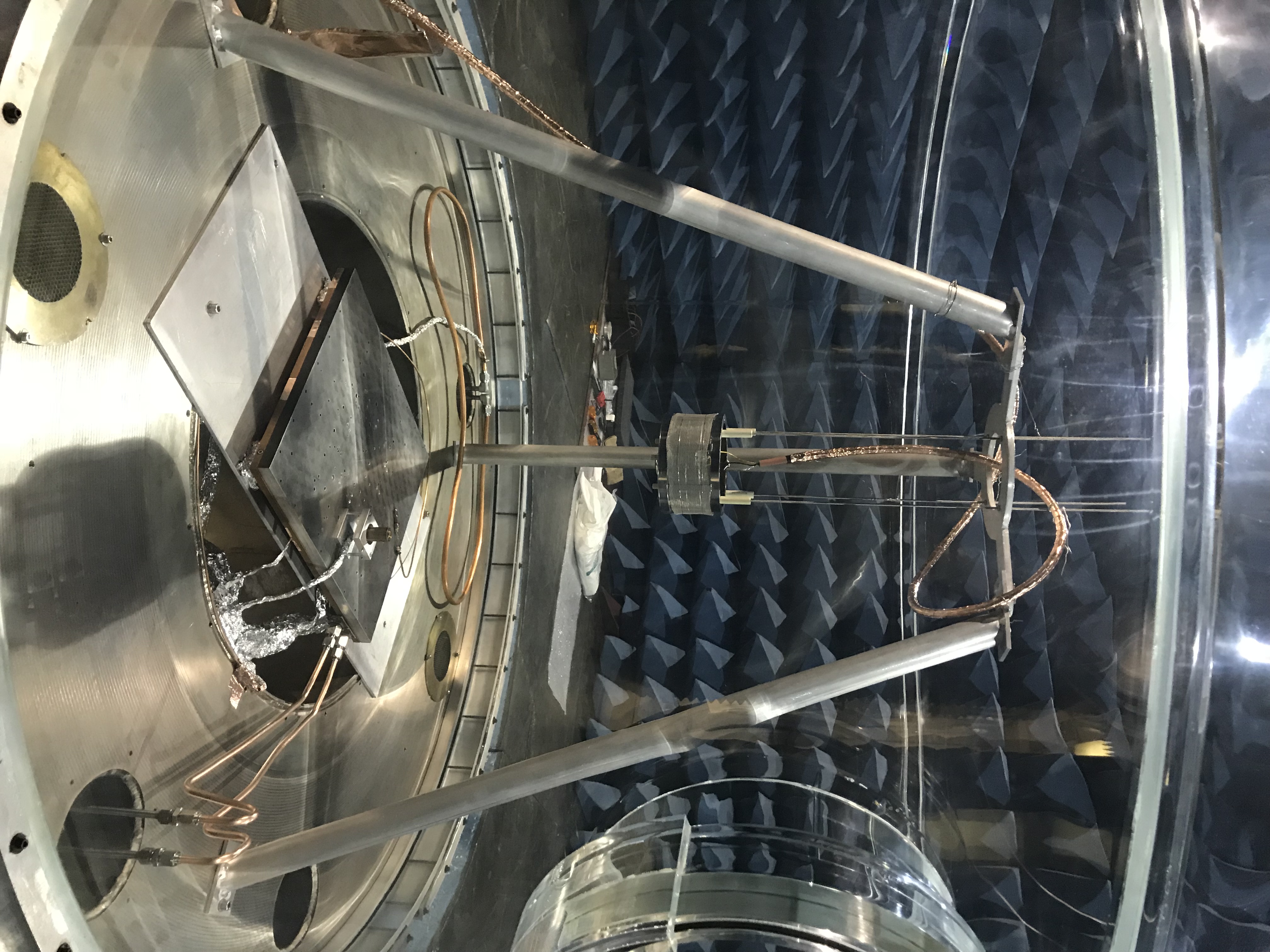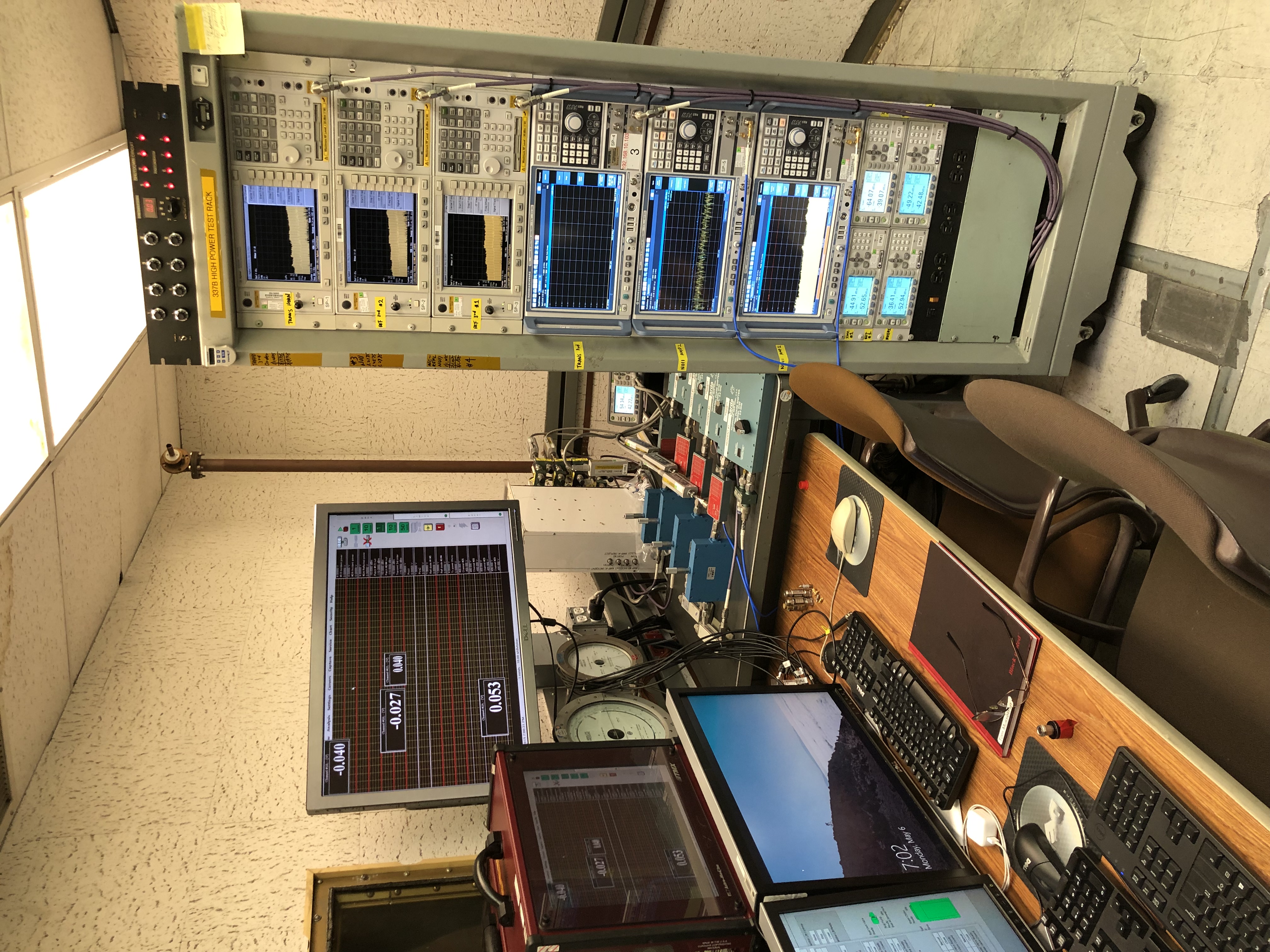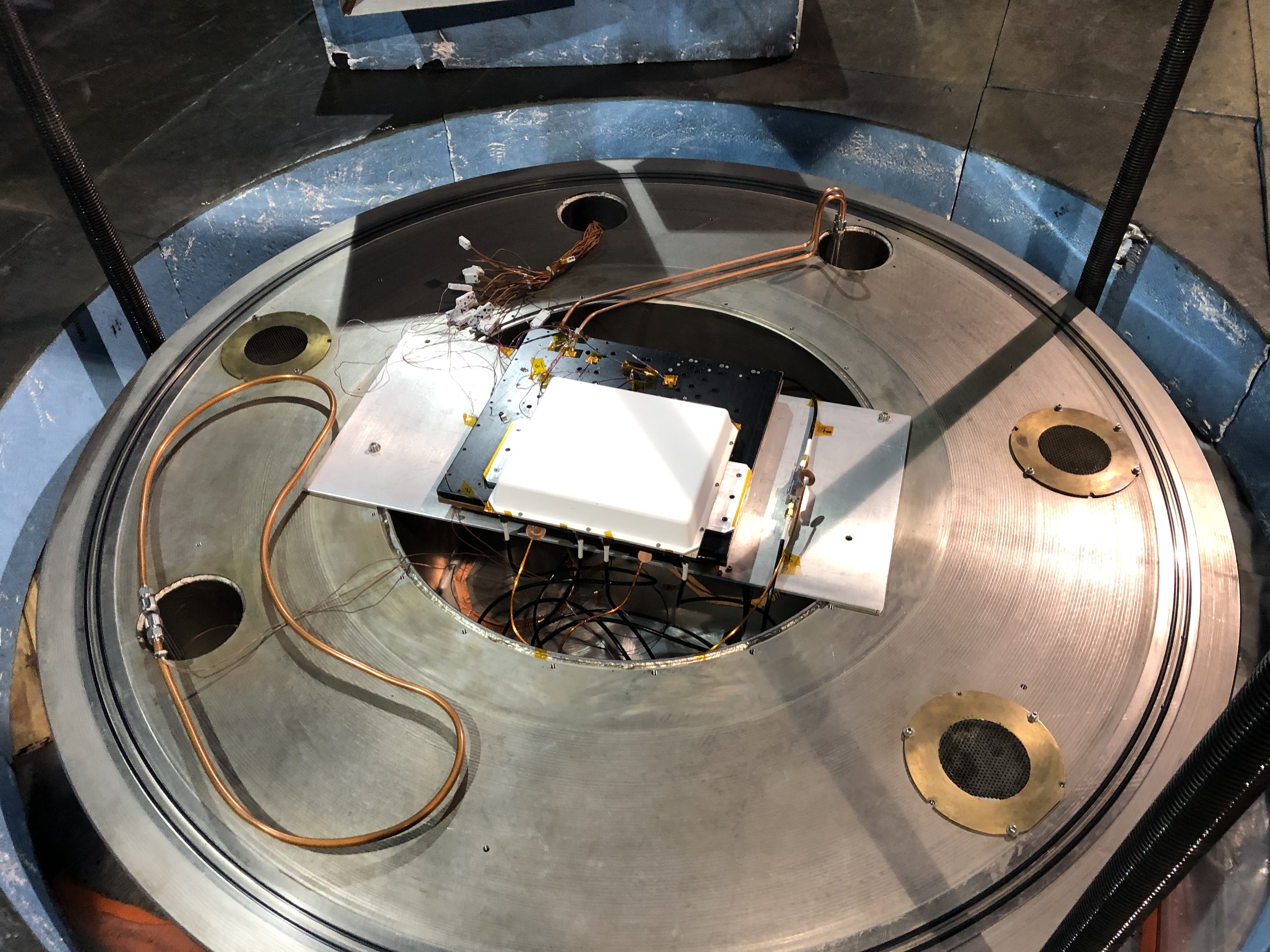Background and Capability
The MESA manages and maintains a world class high power test facility. The facility includes a large 1.8 m transparent bell jar vacuum chamber in which large microwave antennas can be tested to simulate conditions of space, high altitude, and in atmospheric conditions on non-Earth planets such as Mars. The MESA also maintains a separate high power test facility which includes a small vacuum chamber for testing smaller, non-radiating microwave components. JPL has trained technical staff members who can develop a test plan, setup the test equipment, work with customers to make proper interface connections with their hardware, run the test in accordance with a test procedure that has been customized to meet the requirements of the test in question, and provide the data and formal test report that supports flight hardware documentation requirements.
The JPL facility has unique capabilities in the arena of RF, Microwave, & Millimeter wave high power testing for RF Breakdown, both multipaction and ionization breakdown.
Testing approaches have been developed and used for on JPL flight projects for more than 20 years. Typical antenna test plans will meet the requirements of AIAA Standards, 2016 (ANSI/AIAA S-142-2016). These test approaches are used to detect multipaction break down (an avalanche breakdown due to free or freed electron interactions in vacuum with high intensity oscillating electric fields in susceptible microwave hardware geometries) and ionization breakdown (a potentially damaging breakdown that occurs in the presence of a low pressure gas environment can also be triggered by a multipaction breakdown).
Large Bell Jar Vacuum Breakdown Facility
The large vacuum bell jar has an inside diameter of 72.13 inches, is 78.00 inches high at the center, and is made of 1.250 inches thick acrylic plastic that is both RF and optically transparent. The entire facility is enclosed in an RF shielded room, including a control room and a 15 ft x 15 ft RF anechoic chamber around the bell jar.
The vacuum system operates from normal atmospheric pressure to 2x10 -5 torr at room temperature, with local chilling possible using LN2 and/or local heating possible using a heat-plate inside the bell jar. Antenna systems and RF components have previously been tested with CW power levels up to two kilowatts at UHF, four kilowatts at L-band and one kilowatt from S-band through Ku-band. The facility has supported the testing of spacecraft antenna system hardware since 1968. It has also supported the German HELIOS project and other NASA and non-NASA programs. Power monitoring and data logging is computer automated. The system is certified for flight hardware tests.
Small Component Vacuum Breakdown Facility
The small vacuum bell jar has an inside diameter of 14.0 inches, is 20.0 inches high at the center, and is made of 1.0 inch thick glass dome that is optically transparent. The vacuum system operates from normal atmospheric pressure to 1x10 -7 torr at room temperature, with local heating possible using a heat-plate inside the bell jar. It includes a primary roughing pump and a secondary turbo pump which is used to rapidly achieve low pressure. RF components have been tested with CW power levels up to two kilowatts at UHF, four kilowatts at L-band and one kilowatt from S-band through Ku-band. The system includes a high power safety interlock to prevent damage to flight hardware when a high power breakdown event occurs. Power monitoring and data logging is computer automated. The system is certified for flight hardware tests.
